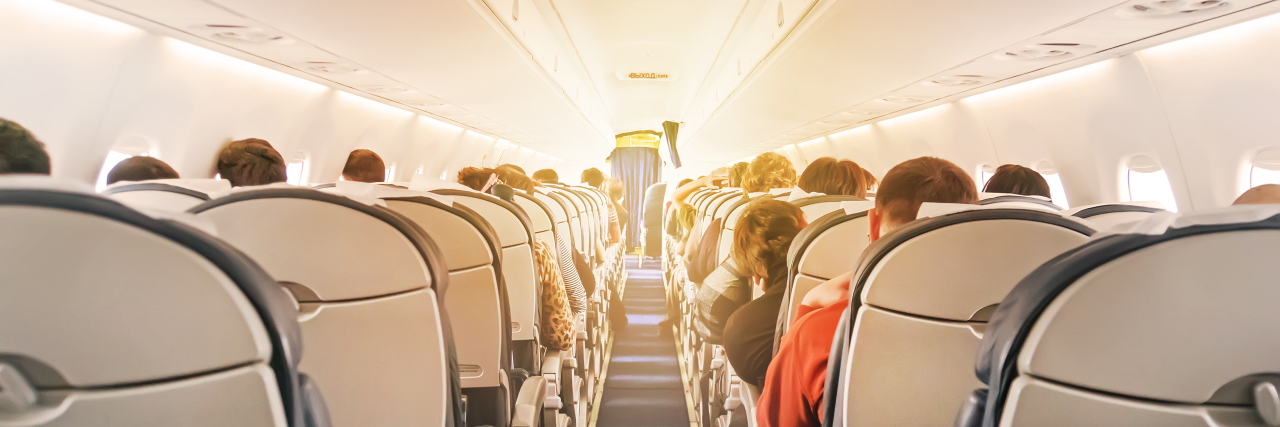Why These Proposed Airplane Accessibility Rules Are an Improvement, but Not Enough
I was a claustrophobic eighth-grader, and we were due to travel cross country. Before we took off on the airplane flight, I was attempting to use the Lilliputian lavatory. I left the door open a small crack so I wouldn’t suffocate to death — or so my panic disorder told me. Before I could even find the light, the flight attendant slammed the door shut from the other side. I banged, I screamed, I pleaded, drowning in darkness. Would I ever get out of the lavatory?
Finally, in what seemed like eons but may have only been minutes, the flight attendant opened up the bathroom door. Whether it has meant taking Imodium as prophylaxis or altering my diet on the day of the flight, my PTSD prevents me from ever again using the toilet during plane travel.
With that experience imbued in my consciousness, I was delighted to read on Reuters that the U.S. Transportation Department is proposing to install disabled-accessible bathrooms on new single-aisle aircraft with a seating capacity of 125 people or more. While my issue was on an older twin-aisle plane, my accessibility nightmare affords me empathy about the air travel needs of everyone with disabilities.
Increasingly used on longer flights, these single-aisle aircraft would be complete with accessible toilet seats, assist handles, faucets, and what would have helped my eighth-grade self the most, assuming they would be easy to find, attendant call buttons in case of emergencies.
Airlines would also be required to have an on-flight wheelchair that would allow safe access and egress to and from the bathrooms, which wouldn’t be as large as dual-aisle planes, but would still have features that will be more amenable to disabled use. Moreover, airline staff would be trained to assist passengers, which I hope would include accommodating the needs of those with mental health disabilities like myself.
While the proposed rule is an improvement, U.S. law still has a long way to go before it fully accommodates disabled people on airplanes. The status quo only requires accessible lavatories on wide-body planes with dual aisles, including the Airbus A330, Airbus A340, Airbus A350, Airbus A380, Boeing 747, Boeing 767, Boeing 777, and Boeing 787.
While some airlines have taken the initiative to have accessible restrooms on narrow-body airplanes, they have not been required to by law. For travelers with wheelchair and other accessibility needs, that often means “holding it” on shorter flights, as disabled people are still second-class citizens on airplanes.
Despite the improvements, I remain disappointed that planes are still a barrier which has culminated in many people with disabilities eschewing air travel altogether. Unlike other modes of transportation, the Americans With Disabilities Act specifically exempts air travel. This creates a precarious situation for those with wheelchairs, some of whom have been required to relinquish them on flights, with many testifying that this has been a humiliating experience.
When users do check their wheelchairs, there have been all too many situations where they have been damaged by those handling luggage. And still others with invisible disabilities like myself find the cramped seats and tense ambiance triggering to our conditions, to the point where we dread air travel from before we book our tickets through the duration of our flights.
The good news is is that there is a 60-day public comment period about the proposed rule change. No matter our specific access needs, disabled people should make our voices heard about what would truly make air travel accessible to people like ourselves.
Getty image by DIY13.

